How quickly can I lower pH of soil in order to plant acidic plants?
Heather Armstrong
9 years ago
Featured Answer
Sort by:Oldest
Comments (13)
mad_gallica (z5 Eastern NY)
9 years agogrubby_AZ Tucson Z9
9 years agoRelated Discussions
Please help! blueberry soil pH is 7.1 - need to plant this week
Comments (41)This will give you an idea of how my plants have done Appletree. This is two years after planting a 10 inch start. I'm not sure there is a "best way" to grow blues, even experts have a wide range on what's "best". Some say only pots, others say ammending the soil with sulfur and wait for ph to adjust, others add peat and pine, etc. I have been growing blues for about 8 years and have tried several approaches, most worked. The one big mistake I made was buying some older plants and I never could get most to grow. The best luck I have had has been with healthy young plants. Your plants are gonna do great. Did you say you are a biologist? I am too and that's why I asked. This post was edited by riverman1 on Fri, Apr 4, 14 at 11:03...See MorepH soil acidifying with battery acid?
Comments (21)After reading all the comments, it’s funny that some of you act like, as if, sulfuric acid (battery acid) is a radioactive chemical, such as Plutonium. I've worked with battery acid and have gotten in my eyes at one time. It didn't feel good, but I ran to the next room and flushed them with sink water for 15 minutes. My eyes are just fine and that happened 30 years ago. If you get it on your skin, then rise immediately or it will start to burn your skin. Other than that, it’s more dangerous when charging the fluid that release toxic fumes and flammable H+ gases. I don't think you'll be doing that when using battery acid for watering your plants. I don't know if you can use literally battery acid, it may have other stuff in it, such as lead and etc. also, if you do use it, make sure the battery is charged at its full complicity before using it. You don't want to use a dead battery's electrolytes fluids. I'm not a wizard on this stuff, but I would recommend buying 100% or 98% sulfuric acid or h2s04 (brand new) in a bottle and not from a battery. To further explain my accident of how the battery acid got into my eyes, (not sure how or why), the container that I opened was under pressure when I opened it, it splashed into my eyes from the 'vent tube'. I think I may have opened it the other day, which allowed air to get inside the container, which reacted to the battery acid overnight and built up pressure within the container. I think that is what happened, but I'm not sure. Maybe I was squeezing the container to remove the cap or lid or held the container wrong, which allowed fluid to flow into the vent tube. My point here is that battery acid is not as dangerous, as one makes it out to be. Just don't drink it. Now, if you get it into your eye (out in the middle of nowhere), and you have no water to flush your eyes, then you can kiss your eyeballs goodbye. Skin will heal, but not eyeballs. Just make sure you have access to plenty of water, before playing around with acid. Make sure, the water is only no more that a room away from you. When I got acid in my eyes, it was not easy to see where I was going. I wanted to keep them closed shut, but I had to open them for a billionth of a second to see where I was going without running into walls. Note: The battery acid that got in to my eyes was brand new and may have been diluted with water. I'm 46 years old now, and I have no eye problem nor do I wear glasses. If you do the math, I was about 15 years old when this happened to me. Cooking foods in hot grease is just as dangerous as a bottle of sulfuric acid....See Morehow to lower pH in my garden soil?
Comments (9)If you're going to proceed without a good soil test (and sadly, the home kits don't really count), you should do your homework. I understand your desire to save some money! What do your neighbors say that their soil always needs? What is the conventional wisdom in your area? Where I live, for instance, the soil tends to be generally pretty good, but somewhat on the acidic side. Conventional wisdom (and my grandmother, and all of the other gardeners in the area) say that adding lime will be necessary where I live. In fact, when I don't do this, I get Blossom End Rot (a sign of calcium deficiency) on my tomatoes and peppers, and when I add some lime, it goes away. Does the conventional wisdom of your area say that the soil is always alkaline, and you'll need to lower the pH? If so, products to help you to do this will be available in your area, certainly at a garden store, and quite likely at the "big box" stores like Home Depot (though I might have a bit of trouble finding that stuff where I live, since we have the opposite problem here). If pH-lowering supplies aren't readily available in the local garden stores, I'd have additional doubts about what your home soil test told you. Adding organic matter is always a good step, even without a soil test. As people have said, lots of good organic matter will bring your soil back towards neutral, regardless of where is started, and it will also add lots of the nutrients your plants need to be happy and healthy. I believe it is possible to garden (and even to garden well) without a soil test, but you need to keep on your toes. People gardened for a good long time without access to soil tests, but the other side of that is that the successful folks knew how to read their soil and their plants to detect deficiencies....See More4 ways to lower and maintain soil pH
Comments (12)Thanks to everyone for the interesting responses. dirtydan, have you had a soil test done to determine why your pH is so high? Unfortunately there is no one in this area that will do a soil test for less than $70 per sample. I recently found a link to University of Mass Amherst that offers soil tests for $13 so I am planning to send them some samples. http://www.umass.edu/plsoils/soiltest/soilbrochure2009.pdf I use home test kits for nutrient and pH. I also have a Hanna pH meter that comes in handy for quick tests. I don't know my native soil composition. Its pretty bad though. It could be described as dense gray clay with some occasional small pockets of white material. When dry, its is normally cracked and coated with a layer of frosty looking crystals that taste like salt. The salty crystals grow up the side of masonry, concrete and stucco walls. When wet, it turns to a slippery slime that will coat the bottom of your boots with a couple pounds of thick clay. It has no vegetative matter whatsoever. I have been prepping my raised beds with compost, sand, clay, fertilizer and various sulfur products to lower pH. Where are you in the Mojave? I am located in the city of Lancaster, CA. This is the high desert north of Los Angeles at about 2,400 ft elevation. We only get about 5 inches of rain per year, most of it is in February. In fact we will probably not see any significant rain here until next fall or winter. The arid conditions are one of the reasons for the high soil pH and lack of organic mater, also the fact that we are almost entirely dependent on alkaline municipal water for irrigation. What are you trying to grow that is having trouble? When I first moved here I put tomatoes, squash, cucumber, melon, and several others in the unamended native soil. They were all killed or stunted from the salt or nutrient deficiencies. Iron chlorosis and micronutrient deficiencies were evident in the plants that didn't die immediately. The only exception were some tomatoes that I managed to save by side dressing with aluminum sulfate and a highly acidified nutrient solution, they remained quite stunted however and suffered from BER. Since I have built raised beds and worked the soil, I have a productive garden and only seem to have problems with cucurbits in beds that have been freshly sulfured, and typical aphid and leaf miner infestations. There are two main reasons as to why sulfur is the preferred material for acidifying soil. 1. Economics Sulfur is one of the most plentiful and inexpensive elements on earth, said to comprise 2% of the mass of the earth. Sulfur is a byproduct of oil and gas refining and there is a massive oversupply of the material, especially in Canada where its is extracted from oil sands during refining. High concentrations are not toxic to vegetables. Cucurbits being the exception. Avoid sulfur contact with the leaf surface of cucurbits. Other possible acidifying agents (some impractical): ammonium nitrate liquid nitrogen urea diammonium phosphate acetic acid hydrochloric acid HCl (also called muriatic acid) phosphoric acid Elemental sulfur has been used for centuries as a fungicide and miticide. I don't know if, or to what extent, it affects beneficial soil fungi. I suppose that a reduction in soil fungi is OK as long as our vegetables are not negatively impacted, and there is no damage to the environment. Once the sulfur it oxidized by soil bacteria I would speculate that soil fungi will return to pre-application population size....See MoreHeather Armstrong
9 years agomad_gallica (z5 Eastern NY)
9 years agoHeather Armstrong
9 years agocooperdr_gw
9 years agotoxcrusadr
9 years agothunderbear48
9 years agoHeather Armstrong
9 years agotoxcrusadr
9 years agojoepyeweed
9 years agoazdoctor
9 years ago
Related Stories
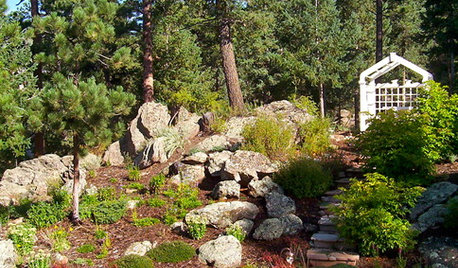
GARDENING GUIDESHave Acidic Soil in Your Yard? Learn to Love Gardening Anyway
Look to acid-loving plants, like conifers and rhododendrons, to help your low-pH garden thrive
Full Story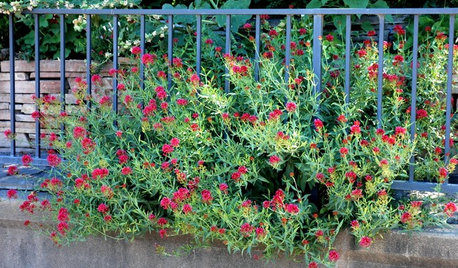
GARDENING GUIDESGrow a Beautiful Garden in Alkaline Soil
Got alkaline soil? Learn how to manage it and the many beautiful plants that will thrive in this ‘sweet’ soil
Full Story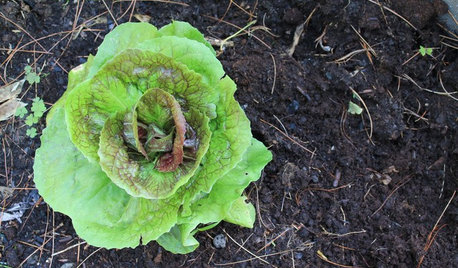
FARM YOUR YARDHow to Get Good Soil for Your Edible Garden
The nutrients in your soil feed the plants that feed you. Here are tips on getting it right — just in time for planting season
Full Story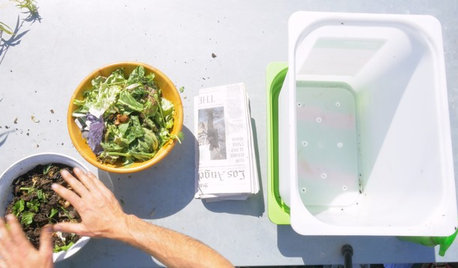
GARDENING GUIDESHouzz TV: Make a Worm Bin for Rich Soil and Happy Plants
A worm-powered compost bin that can fit under a sink turns food scraps into a powerful amendment for your garden. Here’s how to make one
Full Story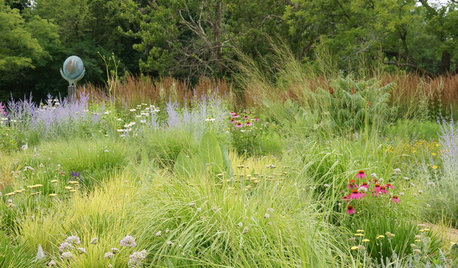
GARDENING GUIDESGet the Dirt on Your Garden’s Soil
Understand how your soil supports your plants so you can ensure your garden’s success
Full Story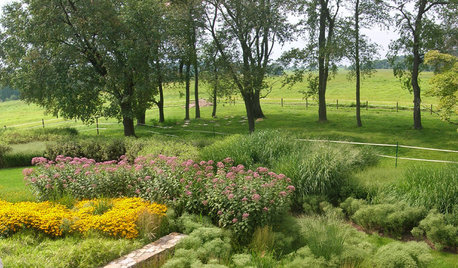
GARDENING GUIDESHow to Stop Worrying and Start Loving Clay Soil
Clay has many more benefits than you might imagine
Full Story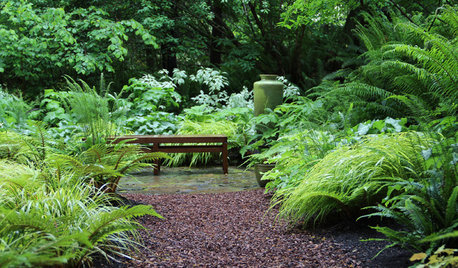
GARDENING GUIDES10 Solutions for Soggy Soil
If a too-wet garden is raining on your parade, try these water-loving plants and other ideas for handling all of that H2O
Full Story
GARDENING GUIDESGardening Solutions for Heavy Clay Soils
What’s a gardener to do with soil that’s easily compacted and has poor drainage? Find out here
Full Story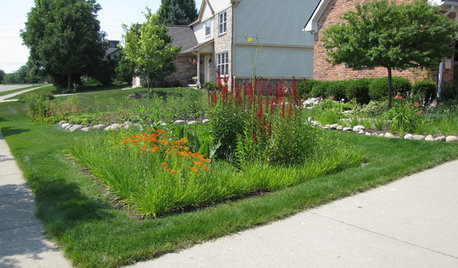
LANDSCAPE DESIGNHow to Shape a Rain Garden and Create the Right Soil for It
Learn how to grade, lay out and amend the soil in your rain garden to support your plants
Full Story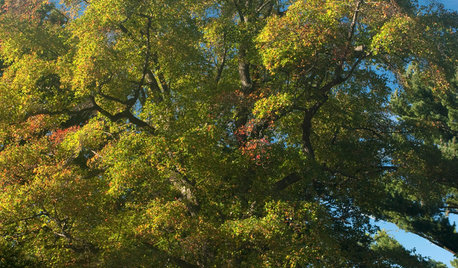
TREESGreat Design Plant: Nyssa Sylvatica
The black gum tree tolerates moist soil and provides many years of beautiful foliage, from summer to fall
Full Story


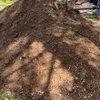
kimmq